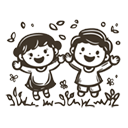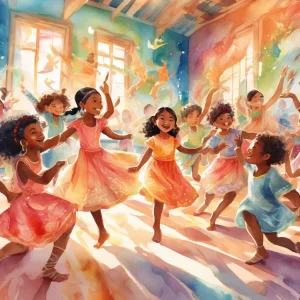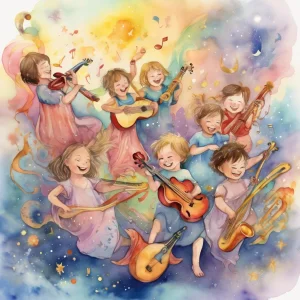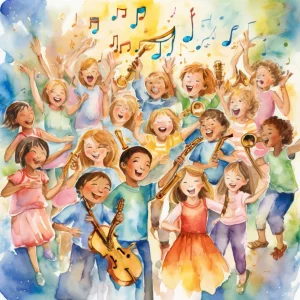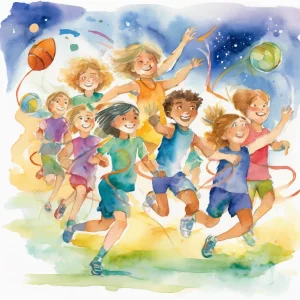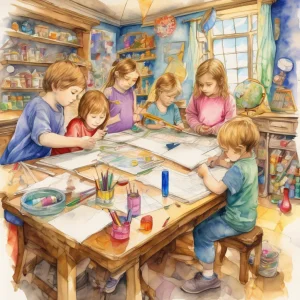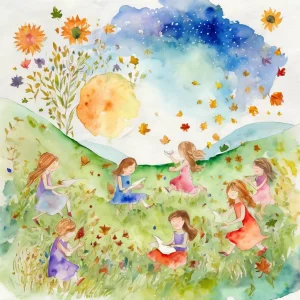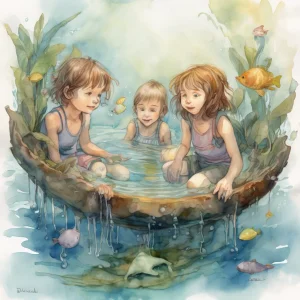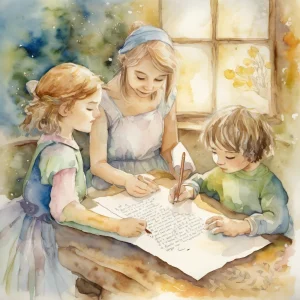Activity
Similar Activities
Musical Freeze Painting: A Creative Dance Adventure
Children’s Age: 3 years
Activity Duration: 10 – 20 minutes
An engaging activity combining painting with musical freeze dance to promote creativity and play skills.
Activity Duration: 10 – 20 minutes
Whispers of the World: Around the World Virtual Adventure
Children’s Age: 7–9 years
Activity Duration: 20 – 30 minutes
Embark on the "Around the World Virtual Adventure," a captivating and educational journey for children to explore various cultures and innovations globally. Through this activity, …
Activity Duration: 20 – 30 minutes
Enchanted Musical Storytime Adventure: A Journey Through Sound
Children’s Age: 2–3 years
Activity Duration: 10 minutes
"Musical Storytime Adventure" is a delightful activity designed for children aged 24 to 36 months to enjoy a fun and educational experience. Set up by gathering picture books and c…
Activity Duration: 10 minutes
Musical Harmony: Healthy Routines Jingle Jam
Children’s Age: 4–6 years
Activity Duration: 15 – 25 minutes
The "Healthy Routines Jingle" activity is tailored for children aged 48 to 72 months to enhance self-care skills, writing abilities, and musical creativity through a fun approach. …
Activity Duration: 15 – 25 minutes
Enchanted Melodies: Musical Rhyme Relay Adventure
Children’s Age: 3–4 years
Activity Duration: 15 – 20 minutes
Engage children aged 36 to 48 months in the Musical Rhyme Relay, a fun activity promoting adaptive development and communication skills. Set up a relay course with cones, musical i…
Activity Duration: 15 – 20 minutes
Harmony of Motion: Musical Sports Relay Race
Children’s Age: 6–8 years
Activity Duration: 15 – 30 minutes
The "Musical Sports Relay Race" activity fosters teamwork, cooperation, and sportsmanship in children through an exciting outdoor game blending sports and music elements. Kids will…
Activity Duration: 15 – 30 minutes
Ecosystem Adventure Board Game - Nature's Quest
Children’s Age: 7–9 years
Activity Duration: 10 – 25 minutes
An interactive board game where children explore and learn about ecosystems through challenges and tasks.
Activity Duration: 10 – 25 minutes
Enchanted Measurement Adventures: Measuring Real-World Objects Scavenger Hunt
Children’s Age: 5–10 years
Activity Duration: 10 – 20 minutes
An educational activity engaging children in measuring real-world objects through a fun scavenger hunt.
Activity Duration: 10 – 20 minutes
Whispers of the Seasons: Seasonal Collage Exploration
Children’s Age: 5–6 years
Activity Duration: 10 minutes
Engaging activity where children create collages representing different seasons.
Activity Duration: 10 minutes
Animal Feast Adventure: A Whimsical Feeding Frenzy
Children’s Age: 5–8 years
Activity Duration: 10 – 25 minutes
An interactive activity where children feed toy animals with pretend food, promoting communication skills and adaptive development.
Activity Duration: 10 – 25 minutes
Nature's Objects: Exploring Buoyancy Adventure
Children’s Age: 6–7 years
Activity Duration: 10 minutes
An engaging hands-on activity for children aged 6-7 to explore buoyancy with natural objects.
Activity Duration: 10 minutes
Gratitude Journey: Writing Thank-You Notes Experiment
Children’s Age: 6–8 years
Activity Duration: 10 – 20 minutes
A creative activity for children aged 7-8 to write thank-you notes, enhancing cognitive and communication skills.
Activity Duration: 10 – 20 minutes


